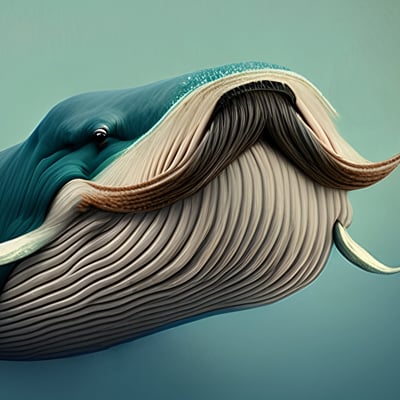The only possible exceptions I can think of are fish(I imagine gills and mouth are not connected but don’t really know). I am excluding bacteria and viruses and I believe they don’t really breath(correct me if I’m wrong).
Yes, most animals can. Insects don’t breathe the way we do at all. They have separate openings for their respiration.
Amphibians start out with gills and only in adulthood do they develop lungs (althourh the axolotl keeps its gills for life) and can respirate through their skin.
Mollusks either respirate through their skin, gills, or through an air sack.
In none of those cases do the respiratory and digestive tracts cross. And those groups of animals outnumber us by far.
Most mammals (if not most animals) breathe through their noses.
People complaining about humans being designed poorly don’t know that this design “flaw” is what allows us to be able to speak.
Yes, this increases our risk of dying by choking. But despite that, being able to speak has been so evolutionarily advantageous that our increased risk of dying is inconsequential in the grand scheme of things.
I’d have put the vocal chords in the nasal passage, allowing humans to still talk while eliminating the choking problem.
The laryngeal nerve is a much more stupid design, simply because there’s no practical reason for it to be the way it is.
Also: if we didn’t have the ability to breath through our mouths, swimming as a sport would be harder, since we don’t have the ability to close our nose-holes.
I’d have put the vocal chords in the nasal passage, allowing humans to still talk while eliminating the choking problem.
Exactly. A very simple correction to the design would allow for both.
The laryngeal nerve is a great example of how flawed our bodies are. A few more are:
- Our back is terrible for walking upright. It evolved as a horizontal support and doesn’t work well when compressed.
- Our hips are too narrow for the size skull we give birth to. Many women die from this without healthcare.
- Our eyes suck. A lot of people need corrective lenses from a young age. This gets even worse as we age.
- Speaking of eyes, our retinas are backwards. The nerves that send the signals back to our brains run in front the receptors that pick up the light. We have a blind spot because those nerves need to pass through to reach the brain.
Most animals do not have this habit of complaining.
When turtles hibernate they ‘breathe’ through their butt (cloaca).
snores through my asshole
I looove being a turtle!
Now everyone in the mechanic’s waiting room is wondering why I just snorted. Thanks… 😂💀
Did you snort through your butt?
You’re my favorite commenter in this thread. Please enjoy this squid as a token of my affection: 🦑
Fun fact. So do bears.
Guinea pigs are obligate nasal breathers. They only breathe through their mouths when in extreme respiratory distress.
They are also absolutely adorable.

That air is still going through the same tube as the food though, regardless of nose or mouth breathing.
Dolphins are the most classic example, having the blow hole.
Insects ‘breath’ through their ‘skin’
Dolphins can breathe thru their mouths tho.
There’s been some with damaged blowholes who have to resort to that.
What they do normally is like when you can “block” the connection of one or the other so air only goes thru one path. No idea how to describe that, or if other people can do it tho.
But if a dolphin needs to they can breathe thru their mouths just fine.
Do you have a link for that? Everything I’m finding says they can’t breathe through their mouth. There’s one scientific paper where they found a mouth breathing dolphin and said this has never been described in a scientific paper before. As far as I can tell there’s just this one dolphin who’s been seen doing it.
https://onlinelibrary.wiley.com/doi/abs/10.1111/mms.12349
Here’s a paper describing a dolphin that died due to blowhole obstruction:
To me it seems more like a one off case that a dolphin was able to mouth breathe, not that all of them can.
As far as I can tell there’s just this one dolphin who’s been seen doing it.
I mean, how many do you need?
It’s not exactly an ethical study to go around plugging blowholes and seeing how many live…
In the example of one who could, it appears the dolphin had a narrow blowhole (reminiscent of Hank Hill’s urethra).
But just like Hank could still pee, the dolphin could still breathe somewhat thru the narrow blowhole as evident by the barely noticable water spout.
That would have resulted in the dolphin surfaces more and for longer times, which probably gave him the opportunity to learn how to breathe thru its mouth.
Maybe not all can do it.
Not all humans can close off their nasal passage, that’s why some people have to wear nose plugs when swimming.
I have to pop my ears all the time, because of that I can close my nasal or throat passage on control, other people learn to do it for other activities…
But every single dolphin could be capable, just no reason to learn.
And in the (at most) 5 minutes it would take a dolphin to suffocate from a fucking eel clogging it’s blowhole just ain’t always enough time.
We have no idea how often it happens and the dolphin lives, or dies.
We do t have enough data to be making hard claims, and no one is torturing enough dolphins to find out.
Right, that’s what I’m saying. Not enough data to make hard claims, which is why I’m saying this statement is a bit of a stretch:
if a dolphin needs to they can breathe thru their mouths just fine.
As far as I can tell this has happened once ever. I’m not sure that qualifies as “just fine” when there’s more evidence that plugging a blowhole is very bad for the dolphin.
I read about this after I had the showerthought that dolphins have their nose on the back of their head. Apparently they evolved a ‘plug’ to separate the nose-lungs and the mouth-stomach. It was thought they couldn’t control it, but they found an example of a dolphin who had a damaged blowhole and figured out how to breathe from the mouth. But it looked like it wasn’t easy, iirc the dolphin had to basically swim fast before surfacing to get the air to help force it open. The dolphin wasn’t expected to live long.
All arthropods and annelids have completely separate breathing and eating apparatuses. Molluscs don’t even breathe; like fish, they have other ways to absorb oxygen.
Horses still breathe through the same pharynx that food goes through. The question isn’t mouth vs nose breather it’s “what animals have separate pathways for food and air”, so a horse doesn’t qualify. It’s harder for a horse to inhale food because of the soft palate but it’s not impossible.
Look at my horse.
My horse is amazing.
Give it a lick.
Mm, it tastes just like raisins.
:side-eyeChloe.jpg:
IN fish water goes in through the mouth and out through the gills, so the connection is required. Some might be able to take water in and out through the gills, but the normal ways is in the mouth out the gills.
At least fish probably can’t choke by trying to breathe and drink at the same time.
Can’t some frogs absorb oxygen through their skin?
deleted by creator









